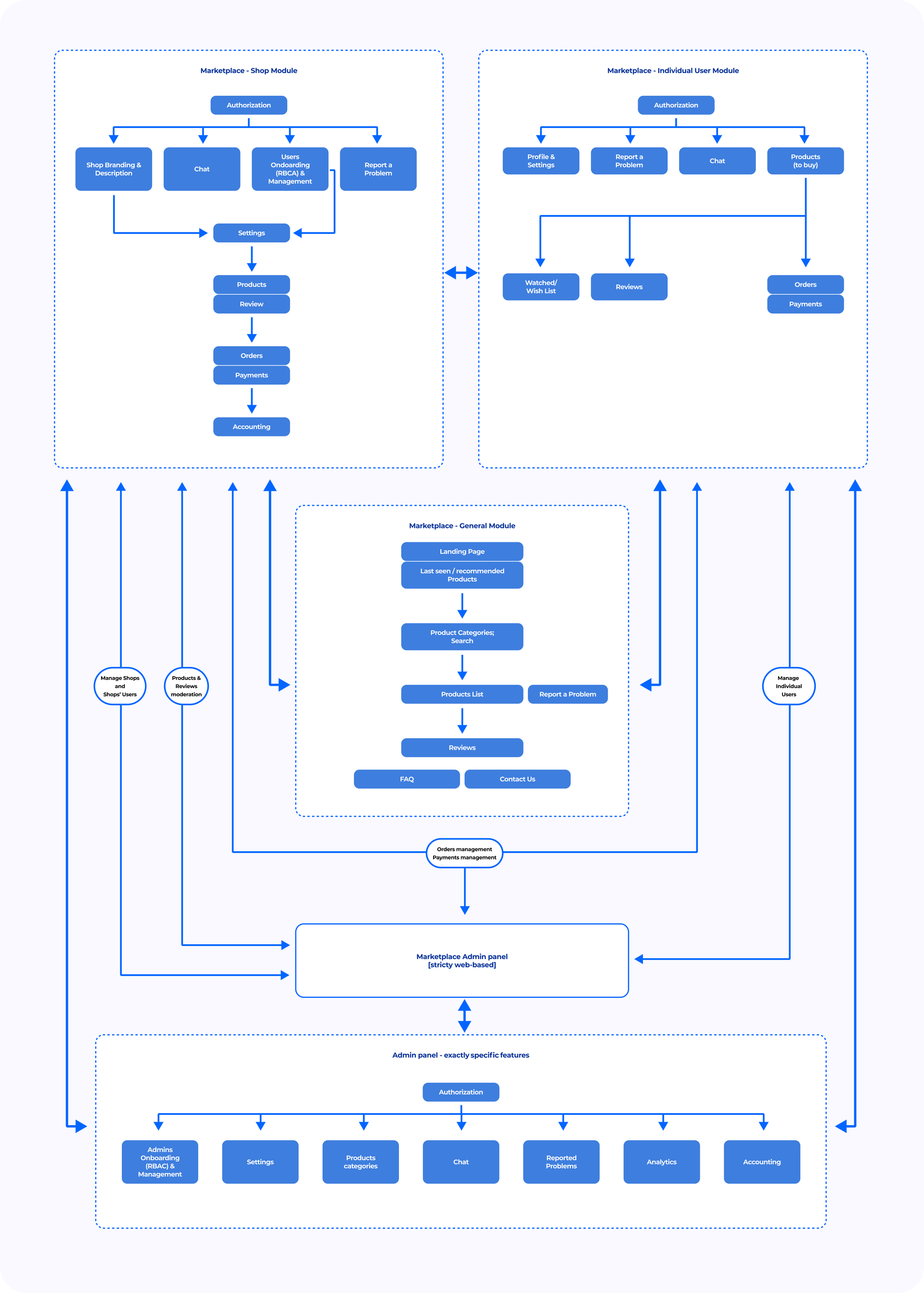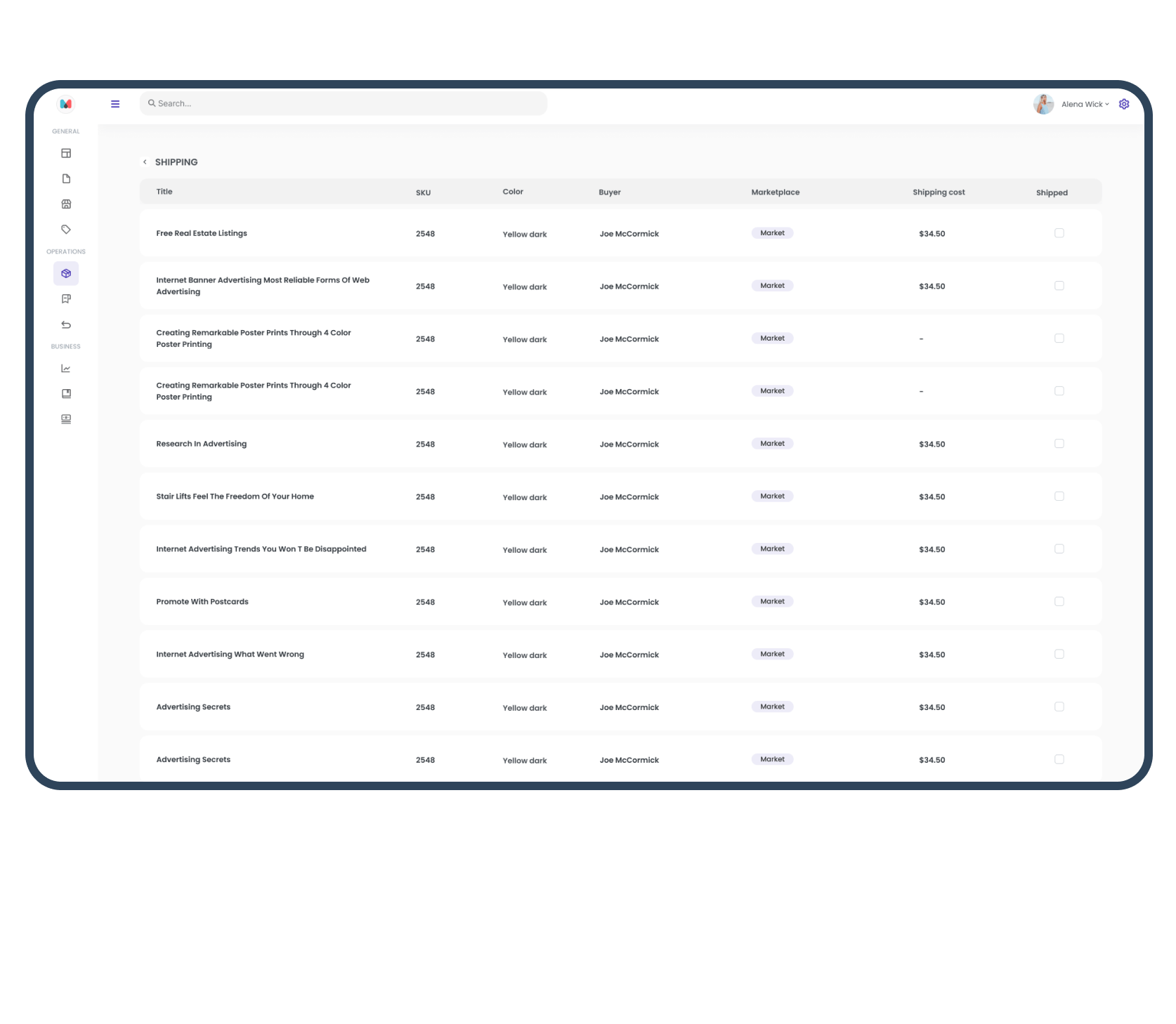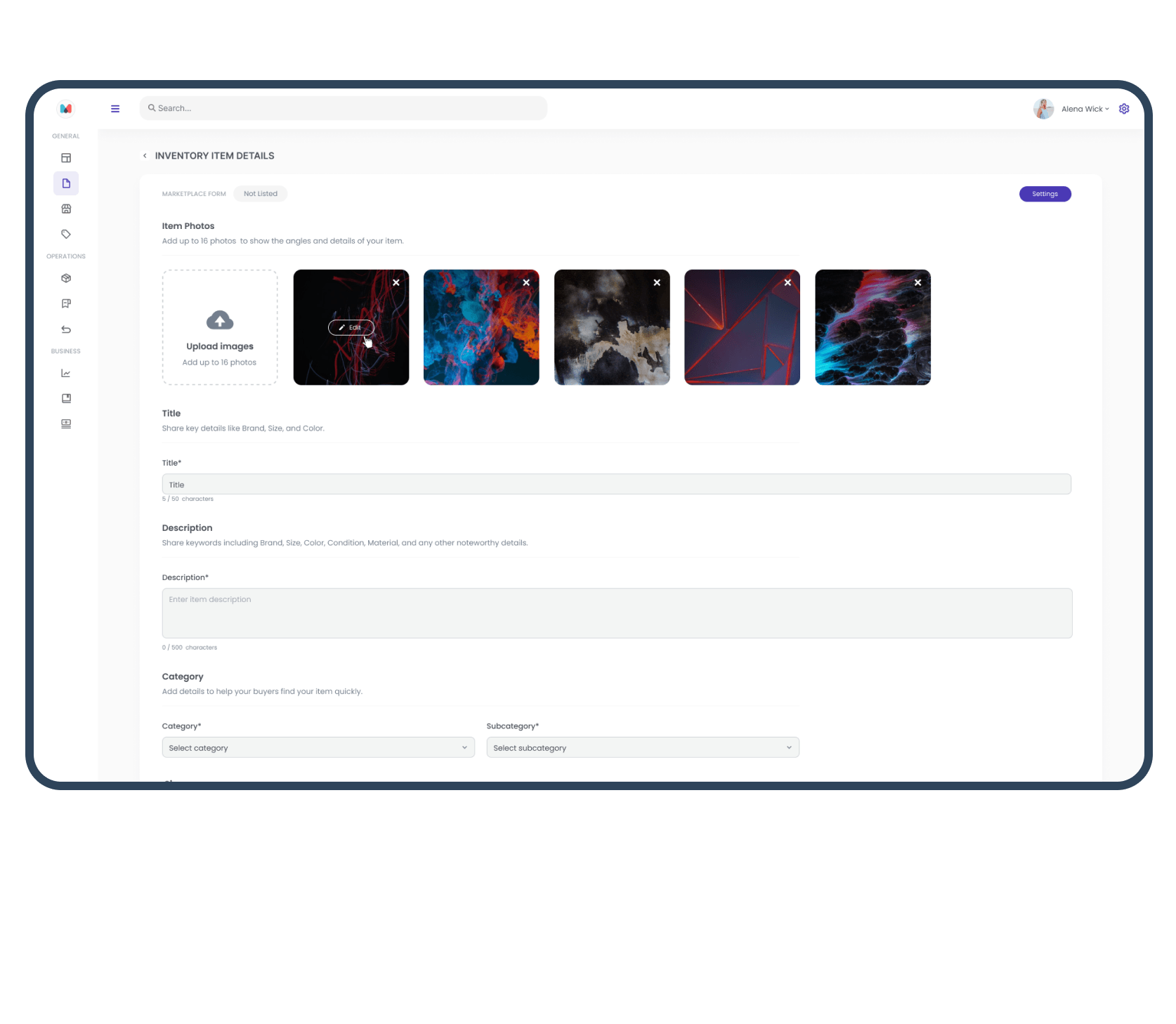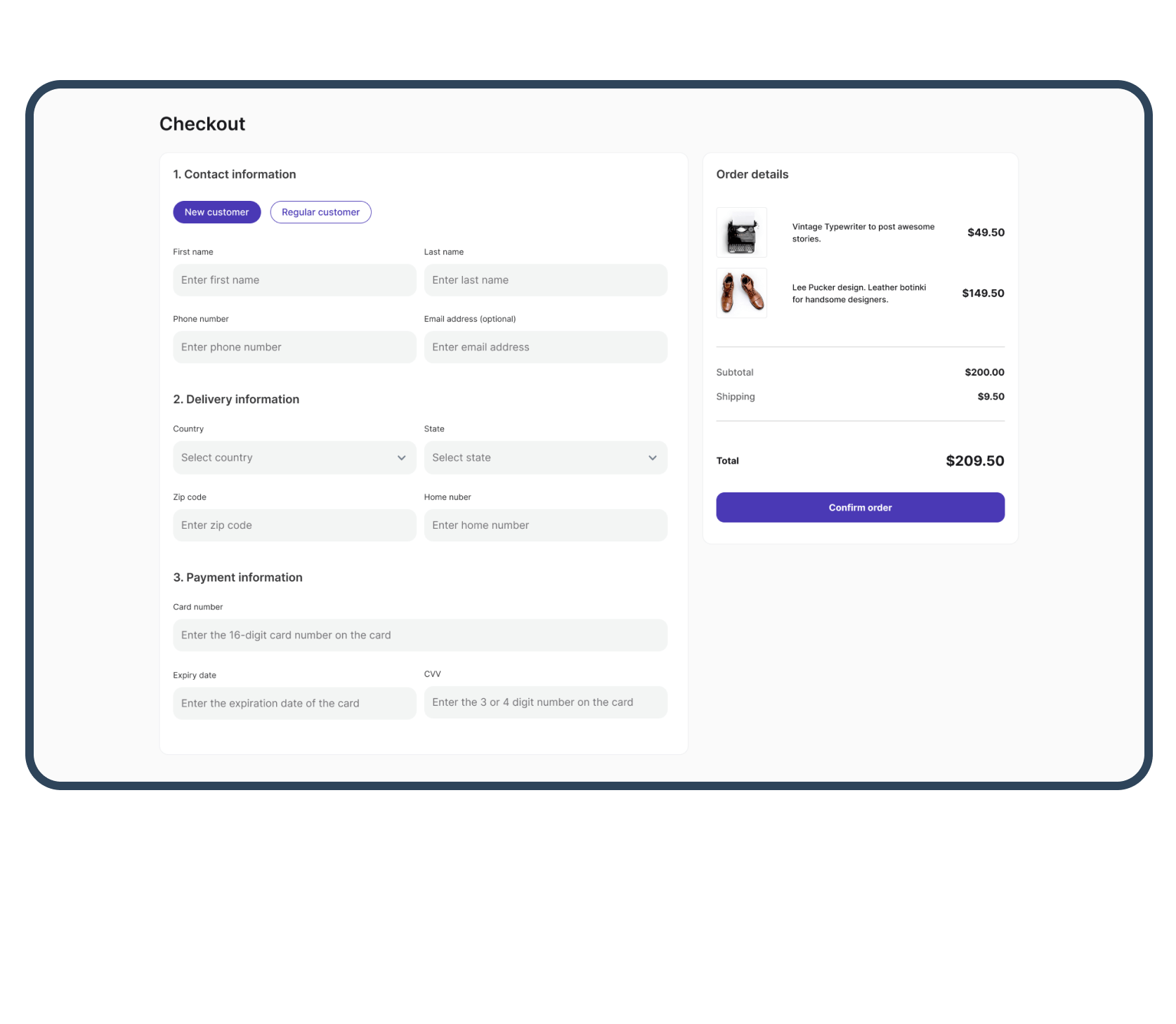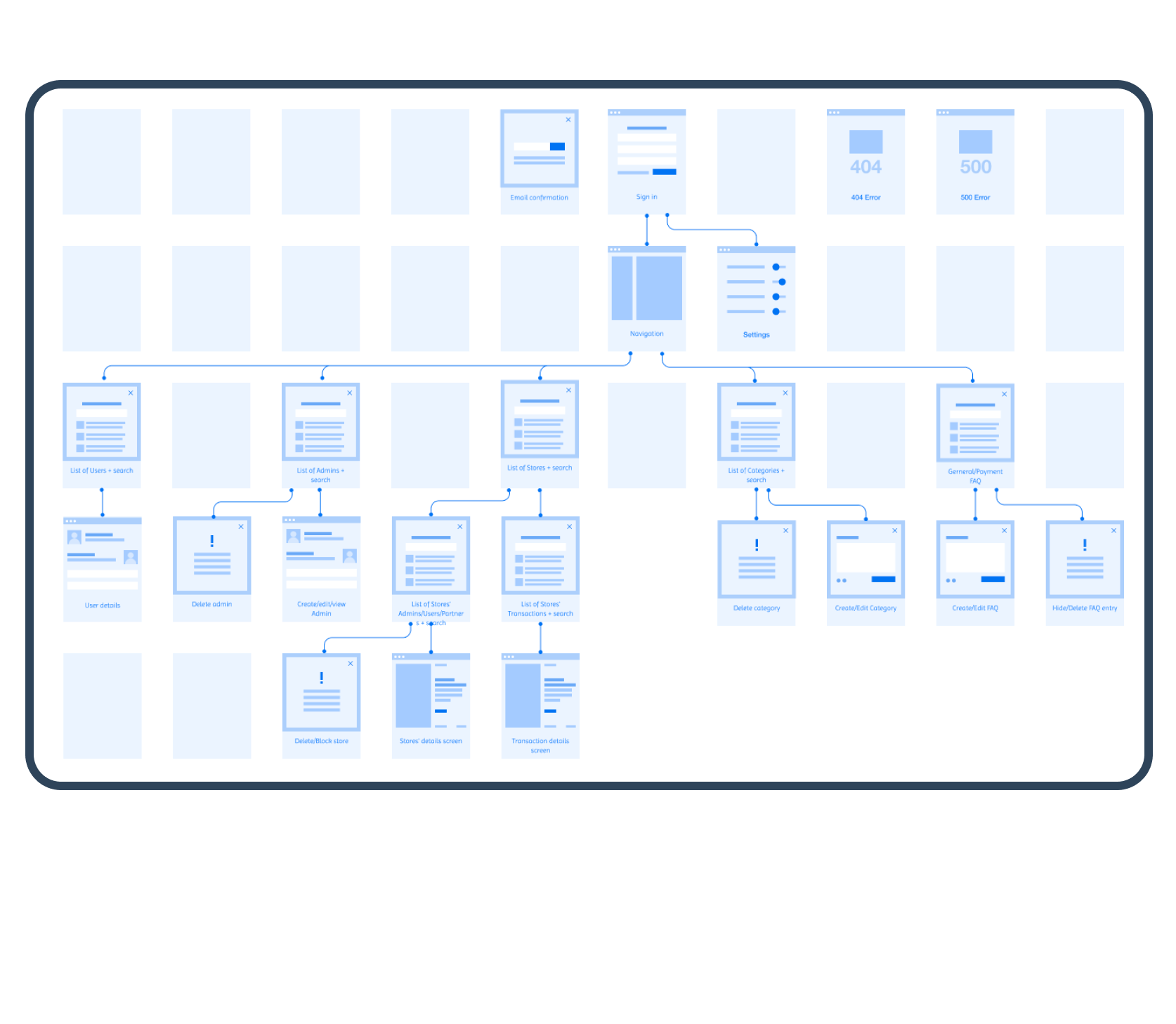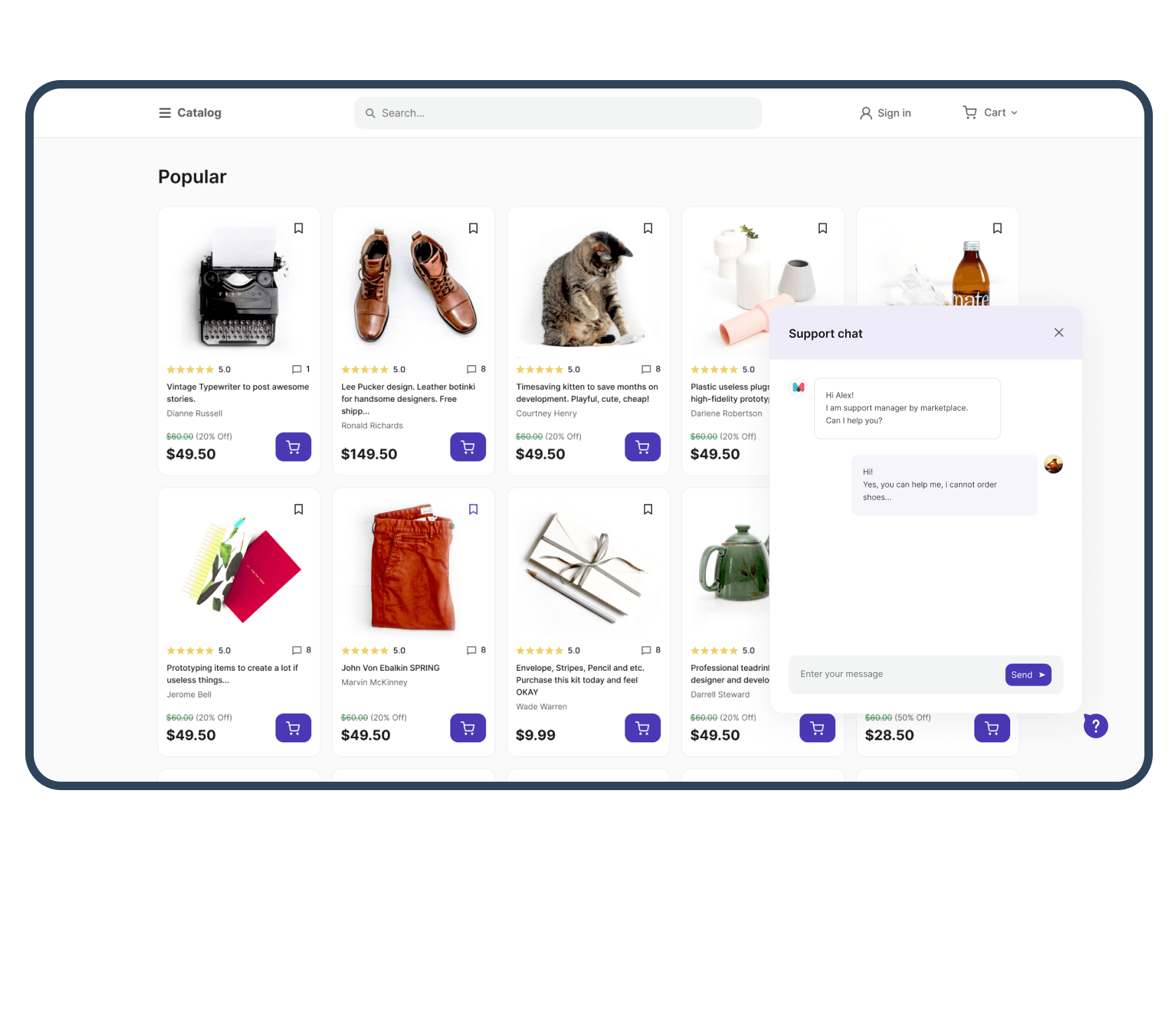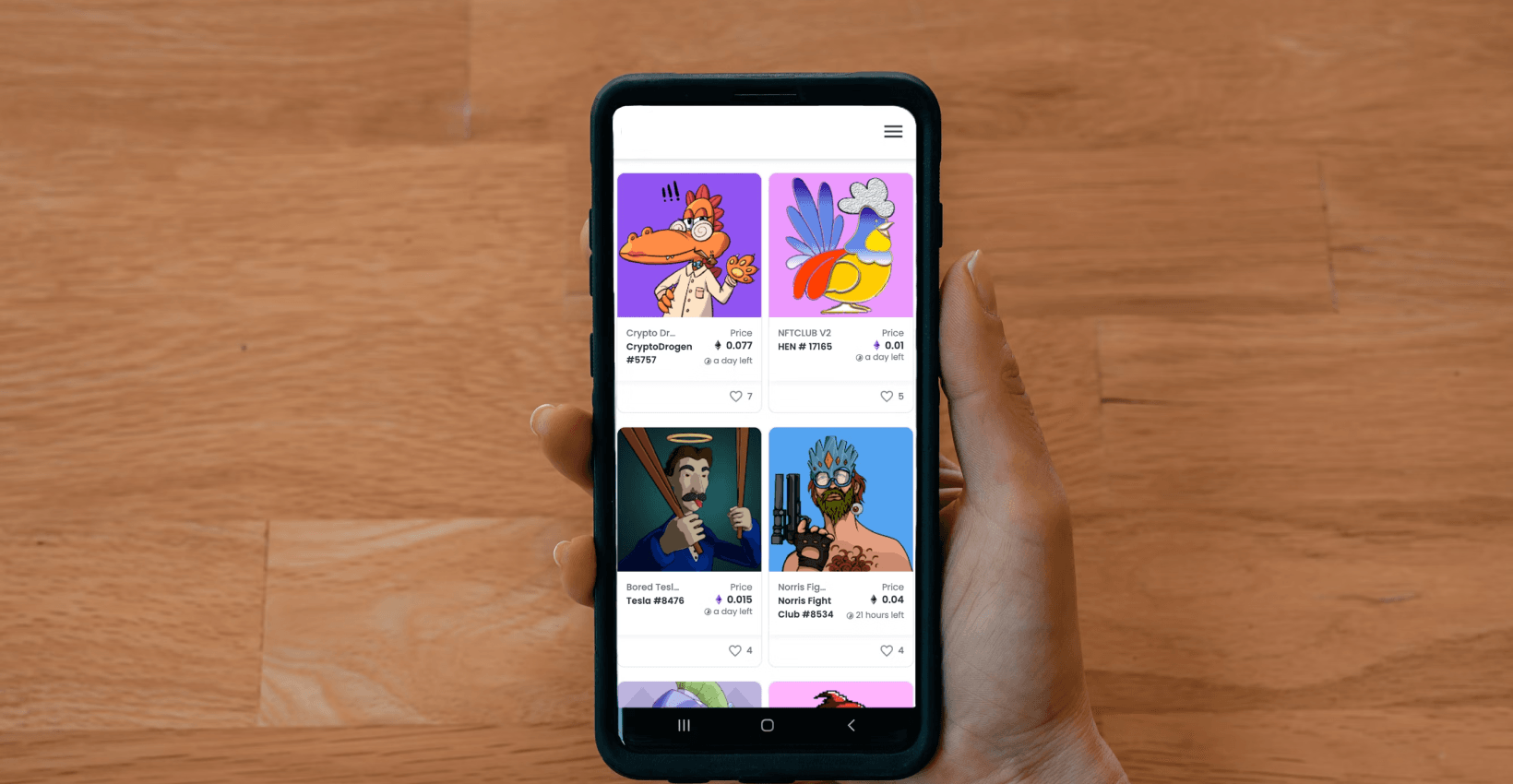A Web-Based Marketplace Platform for B2C Customers
A web software solution and a cross-platform mobile application for a marketplace working in the US and European area
Industry
Marketplace
Team
12 members
Started in
2022
Country
USA
About a Project
Our customer is a US company wanting to unite buyers and merchants in a digital environment. Despite the vast experience in e-commerce, the customer decided not to build a web marketplace on its own and turn to experts. The company needed a technical partner to develop a custom solution and define the proper MVP to increase the ROI.
Goals set to Cleveroad
Define the proper MVP scope and provide the customer with tech consulting to use the funds allocated for marketplace development properly
Develop an extended MVP that would be an elegant and eye-catching response to competitors, optimized for SEO to ensure discoverability, and attract organic search traffic
Provide the customer with further technical consulting and support to keep the marketplace competitive and attract the broader user audience in a long-term run
Solutions we've delivered
Conducting deep analysis of the existing solutions in the domain, considering their necessary core functionality, and extra features essential for a competitive product in the niche
Development of MVP with a thoroughly crafted feature set including custom Content Management System (CMS) tailored to meet SEO needs, optimized search algorithm, merchant inventory management, automated content moderation, and payment engine (3D Secure support)
Providing the Focus Group feedback rounds for already delivered features; their improvements according to the results. Collaborating with the customer for new features development, bug fixing, and product scaling
Results for the Customer
A full scope of expert consulting services that allowed the customer to determine the necessary and sufficient MVP functionality and develop a bespoke and highly competitive marketplace
A flexible, holistic solution that combines a web-based marketplace, web backoffice for the platform’s Administration and on-page SEO implementation, and mobile application and favorably compares with competitors' B2C platforms
Partnership with a reliable and experienced tech provider and IT consultant who monitors and prevents platform obsolescence and maintains the marketplace’s competitiveness, scalability, and attractiveness for users
Business Challenges
Our customer, an American company, wanted to create an online B2C marketplace and spend the money on the project wisely. The solution had to be not "just good to start selling" but functional, convenient for the target group of buyers and merchants, and favorably compared with competitors in terms of well-thought-out features. Therefore, our customer needed an experienced IT consultant and technical partner who would:
Define the feature scope for a Minimum Viable Product (MVP) such that the functionality is sufficient for a competitive, distinctive, but not excessive marketplace, and investments in each feature yield a high return.
Expand the MVP with features that enhance marketplace usability for buyers and merchants while optimizing it for SEO. Focus on tools for improved search engine indexing, relevant content generation, and metadata management, ensuring effective organic promotion and laying a foundation for future scalability and visibility.
Support the solution by providing end-to-end IT consulting services and marketplace maintenance to keep the product competitive and save Return on Investment (ROI) growth opportunities.
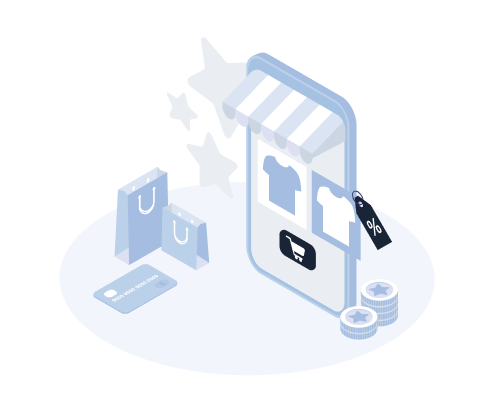
Project in Details
Business Architecture
- We've applied a highly individually-oriented approach for both project phases: Discovery and Development, to define the scope for the "extended MVP" and create it. Using deep analysis and our traditional best practices, we've designed a B2C platform that includes a responsive web version for customers and merchants, a mobile app, and a web-based backoffice for marketplace administration activities.
- Marketplace’s general Admin Panel allows the administration to manage users, merchants, product categories, listings, orders, reports, etc. Users management was included along with a pipeline of business users (shops), as they require human verification and approval for onboarding. A pipeline of problems reported by various users (a ticket system) and standard content moderation were included too.
- The primary solution modules are General, Shop, Individual User, Inventory, Orders, Payment, Search, Notifications, and Support. Thus, we covered all the functionality necessary for the marketplace's full-fledged operation, reflecting the platform's individuality. We've also created an Admins management module to lay opportunities for involving new users with Admin permissions when expanding our customer's business.
Product Essentials
The buyer module is available for guests and authorized users. They can browse and search for goods and shops, view details of a selected item. Attempts to perform authorized user actions in the guest mode lead to the proposition to sign in or sign up as a buyer. The functionality of an authorized buyer is also available on the mobile app for iOS and Android.
An individual user module keeps data related to buyers and their activities. The authorized buyers can access and manage their profile, make purchases, chat with support, save the history of orders, payments, watch lists, and wishlists and report a problem. Bookmarking, filtering, and rating goods are also available for authorized buyers only.
The search module provides functionality to look over the entire platform. An algorithm is based on different criteria, optimized by Elasticsearch, and distinguishes with high performance. The search module supports suggestions, recommendations, and autocomplete and meets user-friendliness requirements.
The shop module is the platform’s business users (Shops) component. They can register in the system and access features after review and approval by the Marketplace Administration of their submitted profile. The module allows management of shop branding, listings, orders, payments, accounting, and adding extra users to the shop.
The access to business user functionality for shop owners is available after verification and approval on the Marketplace Administration side. Only verified and allowed shops can post their listings and act on the marketplace. A Super Admin (the shop owner) can also onboard extra admins and users if needed; admins can only onboard users according to the Role-based access control (RBAC).
The pricing management was developed flexibly, so shops can update prices in bulk for goods categories and save time. The marketplace supports multi-currency for listings, as its business area is quite large (Europe and the US). Orders Management is also included and logically connected to transactions, returns, and refunds.
Other Shop functionality includes branding (Logo upload and color scheme set-up) and listings management to create goods as drafts, publish, unpublish, and update them. Posting ads and announcement features let buyers know about upcoming and current sales campaigns, available exclusives, etc.
The inventory module is responsible for the overall inventory management related to the items offered by merchants. As our customer requires, merchants can manage their shop, namely the quantity of the listings, position availability, flexible descriptions, pre-order functionality (if the item has out-of-stock status), etc.
An AI-based automatic content moderation allows merchants to manage positions easily and recognizes 18+ texts and images. All content uploaded by users is automatically checked and marked as “adult” to warn users before accessing the details. It is essential if a merchant has only goods for adults that must be shown for the user agreement.
The product management is conducted on the Merchant side. The basic CMS functionality allows users to post banners and announcements (e.g., promo codes) on the landing page of the marketplace.
Users’ management is also included in the Merchant pipeline. The business users (shop owners) pass their sign-up and must be verified and approved by the marketplace administration. Management of Buyers includes the ability to review details of each user, including the history of their purchases and bookmarked products within their shops.
The buying pipeline includes the user journey from good selection to forming an order with all the item counts and their sums, and finishing with checkout and payment. All the discounts, if any, are included into the calculations. It’s also possible to cancel orders not yet fulfilled, and claim for return & refund for orders according to policy.
The Orders module is responsible for creating the order and filling carts on the platform. Users can access the delivery details and proceed to payment options. Support of multiple payment providers (to choose from on the merchant decision) was one of the customer’s requirements, so we’ve considered the opportunities for it and the future scaling.
The payment module provides overall functionality related to purchases and transactions and includes a refund mechanism. Users can select options available for shops among the integrated payment gateways. The payment engine with 3D Secure support meets the requirements for transactions on behalf of EU and US users. They can pay for goods via popular credit cards with a minimum transaction fee.
Discounts management features allow shops to attract buyers' attention with sales marked at prices. Business users can set up discounts for products one-by-one or the whole category and a period for applying discounts. The final price calculation during ordering is included in the discounts algorithm.
The Admin panel is intended for the marketplace owner. The general module functionality covers the product categories management and availability of goods for unauthorized and authorized users (Guests and Buyers). They can view lists of items, search, and acknowledge product details.
The ticket system is designed specifically to manage reported problems from any user side (both buyer and merchant). The platform also includes the notification module responsible for the overall internal notifications: receiving and sending, getting marketing (or other) emails. The push notification service was implemented via the cross-platform Firebase Cloud Messaging (FCM) solution.
The Reporting functionality allows users to review order history, refunds, and returns depending on selections by dates, shops, or other groupings. It is also possible to monitor the revenue of each shop, as well as the marketplace’s income according to its monetization model (subscription-based).
Subscription management allows the marketplace owner to configure and experiment with subscription plans flexibly. It opens the possibility to define the best monetization model to follow, a required amount to pay per plan, and configure the number of listings allowed (some limited numbers and unlimited).
Support chat provides marketplace users with real-time communication functionality. Merchants and customers can quickly contact each other, clarify various purchase details, answer questions, and solve different issues with the platform administration.
Integration with the United Parcel Service (UPS) allows us to cover basic business needs in delivery services with minimal financial expenses for this feature development.
An advertisement module allows the marketplace owner to sell advertising spaces on the site, manage the terms of their usage, and reach an additional revenue channel.
An accounting module integration allows Merchants to conduct all business processes in one place and manage their business completely using only the marketplace account.
AI-based recommendations allow shops to propose extra goods that match recent purchases. The system will also offer the same type of goods (with different looks) for “recently watched” or “recently bookmarked” items.
Development in Detail
- We’ve conducted two phases within the project: Discovery and Development. In the Discovery phase, we applied a very individually-oriented approach considering the pains and fears of our customer in order to define the scope correctly and plan the project flow relying on deep competitor research.
- The Team Composition for the Discovery stage included a project manager, business analyst, solution architect, and UI/UX designer. They performed a deep analysis and planned the project in general. It was also necessary to pay a lot of attention to the design as the sophisticated UI/UX had to distinguish the marketplace from numerous competitors, and our customer was highly interested in. That's why we made a clickable prototype to verify the solution from the UX side and prove its viability.
- Discovery deliverables included features breakdown list with rough estimation, functional and non-functional requirements’ specification, business architecture diagrams (UML, BPMN, flow charts), architectural and deployment technical diagrams, software architecture document, project plan & Gantt chart for budget consumption control, and the UX map.
- A thoughtful approach to the Discovery phase allowed us to find answers to technical challenges: algorithms for optimized search with suggestions and recommendations, sophisticated solutions for merchant inventory management and automated content moderation, and payment engine with 3D Secure support for EU and USA. We’ve also defined key features to make the website SEO-friendly, which included custom schema markup settings for each product type, fully customizable metatags and unique URLs for each product page.
- In the Development phase, we’ve turned the Discovery results into the final product. A Development team consisted of a project manager, business analyst, UI/UX designer, developers, QA and DevOps engineers, tech leads, and solutions architect. The deliverables included a responsive web platform, Flutter mobile app available on iOS and Android devices, and a web-based backoffice. Our AWS-certified engineers employed highly scalable cloud architecture to provide the marketplace with fast loading time and high performance and prepare a solid foundation for further platform scaling.
- We’ve also conducted a Focus Group before and during the development involving the customer and our company’s C-level executives. This allowed us to look at the product concept from various points of view, better understand users' needs, and focus on crucial functionality. As a result, the customer's budget was spent wisely, and the marketplace became highly competitive even as an MVP version.
Technology stack
The technology stack was chosen, considering customer’s DDC and blockchain solutions and the platform’s required functionality
Backend
Node JS
MSSQL
Redis
Elasticsearch
Socket IO
Frontend
React.js
Redux
Next.js
Mobile
Flutter
Infrastructure
AWS
3d party services
Stripe
Firebase Cloud Messaging
AWS Recognition
Results Obtained
Budget optimization due to a proper MVP feature scope
We conducted an in-depth and detailed analysis of the solution, helping our customer determine the composition of features for the project's first stage (MVP development). Thanks to a thoughtful approach, the marketplace functionality turned out to be sufficient, not redundant, and favorably standing out, enlarging the ROI.
Competitive marketplace that attracts users
By focusing on MVP usability, visibility, and on-page SEO requirements, we developed a competitive marketplace ready to thrive in a competitive niche. As a result, the client's website started, gaining organic traffic just three months after its release. We continue our technical partnership, further enhancing the marketplace’s competitiveness.
High-quality support and maintenance of the platform
We keep our collaboration in marketplace maintenance and adding advanced features to the MVP according to our plan. This process is well-established and runs smoothly, allowing the customer to forecast and allocate the budget for support transparently, reducing general costs in the medium and long term.
More Cases

Service Marketplace
P2P Services Providers Marketplace with CMS
